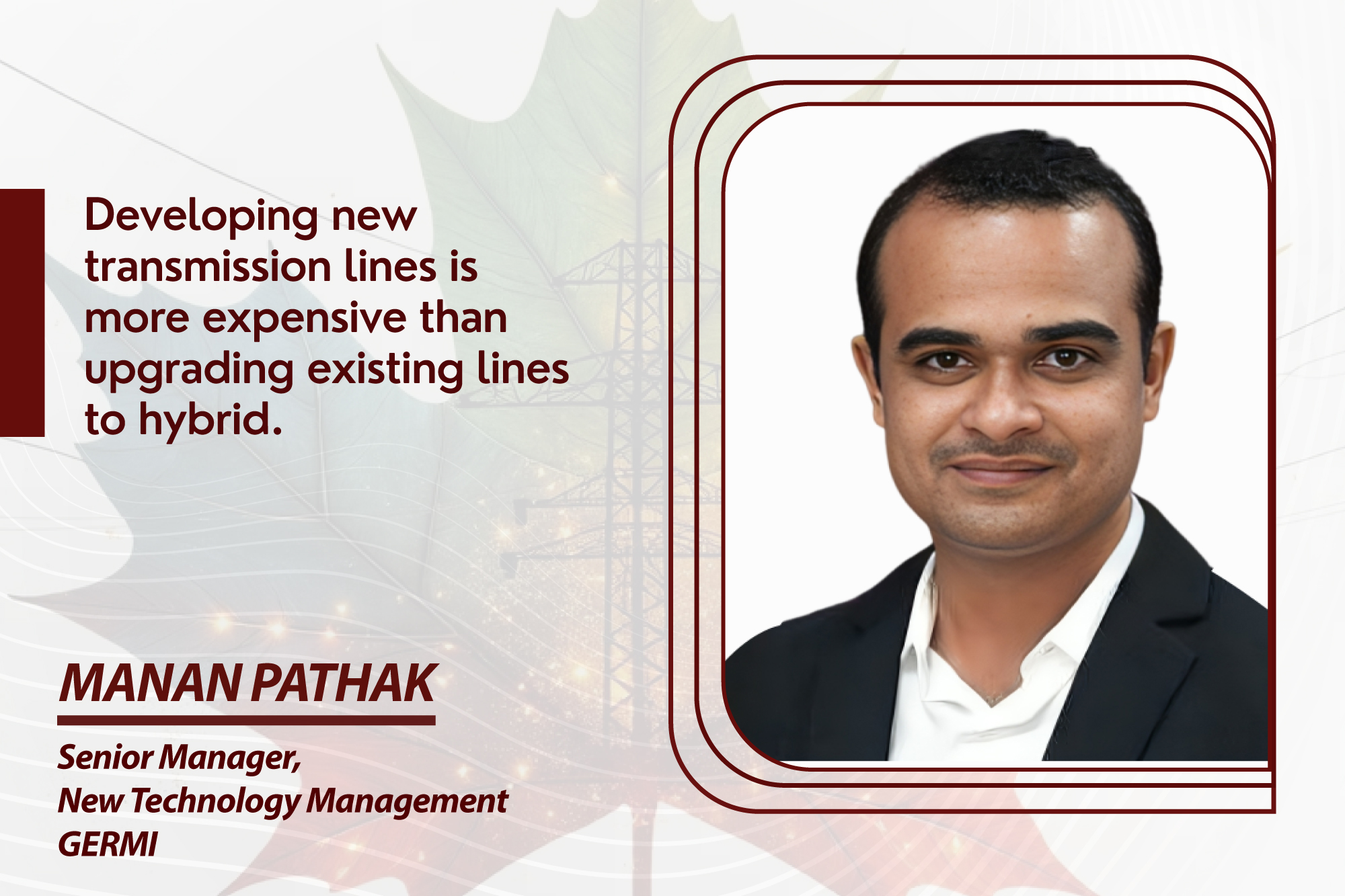Hybrid transmission, a future-ready solution to grid challenges
By Staff Report July 25, 2025 5:40 pm IST
By Staff Report July 25, 2025 5:40 pm IST

A real-time case study confirmed that developing new lines is more expensive than upgrading existing lines to hybrid.
We are transferring from the conventional grid to a smart grid. And one of the contributors to this is hybrid transmission technology, which is not yet implemented in India but will play a significant role in the future. Therefore, we need to determine the type of technology involved and how to integrate the skills related to hybrid transmission technology. In short, the major components of hybrid transmission lines, as well as separate AC or DC transmission lines, include insulators, conductors, hardware, fittings, tower foundations, and earthwork. It is not a core engineering concept. It is a multidisciplinary domain. For this, we require civil engineers and electrical engineers.
Goals set by the government
The central government has set three goals: to achieve 500 GW of renewable energy by 2030, to reach developed country status by 2047, and to achieve net zero emissions by 2070. These targets have been set, and we are all working towards them. The futuristic peak demand is expected to rise three times and could reach around 450,000 MW. As of March 2025, the installed capacity is 47,500 MW. The network length, in terms of circuit kilometres, is 1,650,000, and the inter-region capacity under intra-state transmission systems might reach 1,400,000 MW.
In the coming years, the main transmission level will be 1200 kV UHVAC and 800 kV HVDC. The 765 and 500 kV HVDC systems will support transmission, while the currently dominant 400 kV lines will serve sub-transmission networks. This prediction is based on data from the Ministry of Power. Based on this, we can verify what a future-ready transmission grid should be and the challenges and strategic solutions we need to incorporate. Right-of-way is the biggest concern for new transmission lines. Rebuilding existing lines in the same servitude without changes to the required conductors and insulators is a viable solution. Insulators for hybrid AC-DC lines must be designed to meet the required ratings. By utilising new technology, we can enhance power transfer capability, improve power flow control, and reduce the need for land and public consent.
Hybrid configurationsHybrid configurations are cost-effective. A real-time case study confirmed that developing new lines is more expensive than upgrading existing lines to hybrid. A hybrid transmission infrastructure increases capacity from the same towers, both AC and DC. It helps reduce right-of-way issues, transmission losses (due to HVDC) and improves stability. For high-voltage engineering design, boundary conditions must be considered by the IEC and ICNIRP guidelines. Corona effects, such as audible noise, radio interference and field effects (electric and magnetic) must be analysed. Combining AC and DC on the same tower requires accounting for mutual impact. Globally, this has been implemented in China, the UK, the US, Australia, and South Korea. Key electrical design parameters include electric field, magnetic field, right-of-way, and Corona.
Case study
A case study was taken on a 400 kV HVAC and 500 kV HVDC system due to their similar magnitude and field concerns. Later, we analysed 765 and 800 kV HVDC with varied terrain and ground levels. The aim is to produce a design guideline for utility engineers. With examples like a virtual tower configuration carrying both HVAC and HVDC conductors, mutual coupling and electromagnetic field impact were analysed using simulation software like PSCAD and its Corona submodule. By optimising the DC conductor height and distance between AC and DC conductors, we achieved acceptable EMF values. A neural network algorithm can automate this optimisation based on ICNIRP guidelines. According to the Ministry of Power, a 400 kV double-circuit line requires 52 meters of right-of-way. Our optimised design achieved this within 46 meters. The magnetic field results remained within 17 microtesla, well below the 100 microtesla limit. Corona side effects, such as radio interference and noise, were also within range. The final result achieved an 80–95% efficiency and increased power transfer to 2,500 MW using existing infrastructure. If we adopt hybrid transmission models, it will offer a promising opportunity to meet rising power demands, especially for integrating renewable energy.
Although this study is specific to hybrid systems, similar models can be expanded with converter costing and robotic inspection technology in future designs. Hybrid transmission technology represents a transformative solution for India’s evolving power grid. With the ability to transfer more power using existing infrastructure, reduce right-of-way challenges, and align with clean energy goals, hybrid AC-DC lines are a crucial step towards a smarter, more efficient, and future-ready grid.
We use cookies to personalize your experience. By continuing to visit this website you agree to our Terms & Conditions, Privacy Policy and Cookie Policy.